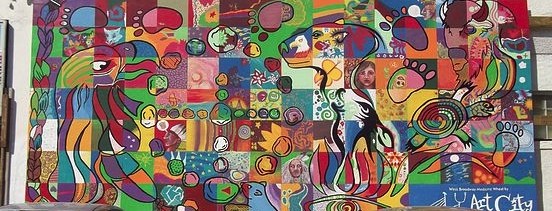“Write a short story (600 – 1000 words) that describes your sense of home; write about the values and the stories that you use to connect yourself to, and to identify your sense of home.” (Paterson, ENGL 470 Course Website)
The lady had been trying to get my attention for sometime. It was the commercial break during the big game, and my mother’s side of the family had gathered to watch. The buffet table was heaped with the traditional Filipino food that I only ate at such events, a handful of times a year.
She thrust out her fist and motioned to me with the other in small furtive movements. Halika dito! I know little of the language of my mother and my mother’s family, but what little I did know, combined with the gestures of the lady, informed me that she wanted me to draw closer. I complied, folding myself smaller to meet her small frame as I approached.
Glancing from side to side a few times, she then looked at me and, seemingly satisfied that there were no eavesdroppers, she uncurled her hand. In the middle of her cupped hand were some leathery looking greenish marbles.
“Calamansi!” She whispered brightly. “A little like orange. Grows back in the Philippines”.

Calamansi illustration by Blanco
Looking closer, the marbles resolved themselves into miniature scale unripened mandarins. I nodded – they sounded vaguely familiar.
“I try to grow them wherever I live, if I can find them. I try here, in Canada. Take the seeds, plant them in my garden.”
I made a move to take one of the fruit, and she moved her palm closer to meet my fingers. The calamansi was light and hard to the touch.
“No calamansi grow here yet, but maybe soon!” She smiled, her eyes crinkling as the contemplated the tiny fruit.
I smiled, and we chatted for some time before I excused myself to refill my plate and return to my seat as the game recommenced. After the gathering I mused about the interaction and of the buried trail of tiny quiescent seeds this women had marked her journey through life with. I, too, have lived in various places in my life, but my movements have been on a smaller scale than the lady’s Trans-Pacific ones. What was the calamansi in my life? Do I even have one?
Both my parents had come from families of agrarian ancestry who have, over the last century, migrated from overseas (Europe and the Philippines) to make their home in Canada. They, too, had marked their new homes with seeds, the seeds of crops and of gardens. Like the lady, they probably took a chance and mixed in a few seeds from their native land with the others, hoping they would grow. No doubt disappointed when they did not, but even still grounded by the knowledge that the seeds were there, dormant in the ground below them.
For me, the idea of home like the calamansi. It is small and is something I carry within me wherever I go. I have lived in places all over Canada, and as I establish myself in each place, home etches itself in the way I arrange my room, in the voices of friends and family transmitted through cellular signals, and in the tastes of familiar dishes that I’ve taken the time to memorize the recipes for. These attributes (the recipes, phone numbers, personal belongings) travel with me, waiting to be unfurled when the dust from the trail settles.
I think home is ultimately a potentiality, like that of the calamansi seed. I think this is true even more so now, as relocation through movement becomes easier, and even necessary, for more and more people in the world, and traditional notions of the household and of home are redefined. We carry this potentiality with us, and strengthen it through human connection, connection to place, through repetition of custom and of creation of memories.
While home can never truly be recreated exactly – just as the calamansi doesn’t flourish in all terra – as me move through space and time, that we continue to establish similar patterns and codes allows us to ensure connection and familiarity.
Works Cited
Iyer, Pico. “Where is home?”. Online video clip. TED. TED. June 2013. Web. 6 Feb 2016.
